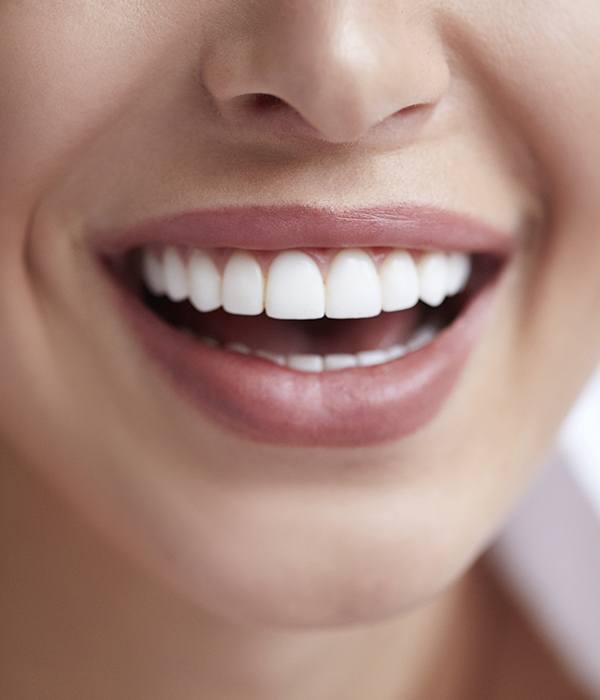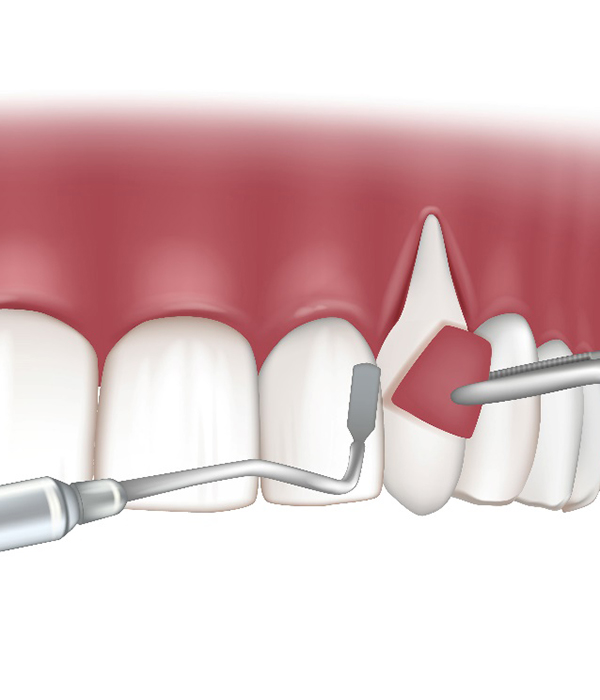
Gum Grafting – Colorado Springs, CO
Gum Recession?
Let Us Help

Have you noticed your gum tissue sits lower on your teeth than before? Maybe your teeth are looking larger, and you aren’t sure why? It could be the result of gum recession. This occurs when the gingival tissue shrinks away from the teeth, which can be caused by a variety of issues, like advanced periodontal disease, injury, or aggressive brushing habits. No matter the reason, it can lead to several oral health problems, including sensitivity and even tooth loss. We can save your smile and stop your discomfort with gum grafting in Colorado Springs, CO.
Why Choose Rocky Mountain Periodontal Specialists for Gum Grafting?
-
Three Specialists with 45 Combined
Years of Experience -
Various Kinds of Grafts Available
Depending on Your Needs -
A Team That Strives for Excellence
During Every Visit
Do I Need a Gum Graft?

A gum graft is often recommended to protect your teeth after suffering gum regression. As the tissue surrounding your teeth pulls away from your tooth, it can expose the root. Initially, you might experience tooth sensitivity, but over time, you will have an increased risk of cavities. You may even lose teeth because your supporting bone can be destroyed.
It’s best to treat a receding gum line at the first sign of a problem. Unfortunately, since it’s a gradual process, as much as 12% of adults aren’t aware that they have an issue until it reaches severe stages. At this point, a gum graft is in your best interest to save your smile.
What Can I Expect During Gum Grafting?

After an initial consultation with your periodontist in Colorado Springs, you’re scheduled for your procedure. A small incision is made into the tissue near the area of recession. Donor tissue from a bank or another area of your body is inserted into the site and stitched into place. Over the next 6 weeks, your gum tissue will fully heal to restore a healthy, attractive gum line.
There are 3 common types of gum grafts that are used:
- Connective Tissue Graft: A flap of skin is removed from the roof of the mouth to collect the connective tissue underneath it. The tissue is stitched over the exposed tooth roots to restore a healthy gum line.
- Free Gingival Graft: Tissue is taken directly from the roof of your mouth and sutured to the treatment site. This is typically recommended for patients who only need to thicken certain areas in the mouth.
- Pedicle Graft: Tissue at or near a specific tooth is cut, allowing it to be stretch and stitched into place to cover an exposed root.
As an alternative to taking tissue from the roof of your mouth, there are instances where we may recommend using a donor bank. We will determine which option is best for your specific needs.
What are the Benefits of Gum Grafting?

Restoring a healthy, beautiful gum line offers many benefits, including:
- Preserve bone and teeth.
- Protect the root from complications.
- Correct a toothy or uneven appearance.
- Treat chronic tooth sensitivity.
Gum Grafting FAQs

Not sure what to expect from the gum grafting procedure or how you should prepare? Let our team know! We always enjoy the opportunity to teach our patients more about our services so that they can make better decisions about their oral health. Here are a few common questions we’ve received from gum grafting patients in the past. If you can’t find the information you’re looking for here, you can reach out to our practice; one of our staff members will be happy to help.
Is Gum Grafting a Painful Procedure?
We’ll numb your mouth at the beginning of the procedure, so you’ll experience little to no discomfort while the treatment is actually being performed. After the local anesthetic wears off, you’ll probably experience some soreness and sensitivity in your mouth for a few days. You can use ibuprofen and other over-the-counter medications to keep any pain under control. The discomfort should fade on its own as your mouth recovers. If it seems to be getting worse or lasts longer than expected, there could be a problem; call our office immediately.
How Long is Recovery After a Gum Grafting Procedure?
Recovery time isn’t exactly the same for every patient. Some bodies naturally heal faster than others, and the complexity of the procedure has to be taken into account as well. Most of the time, though, you can expect your recovery to take around two weeks. During that time, you should avoid any hard or chewy foods. Stick to a soft food diet that’s gentle on your mouth. Also, make sure that you’re drinking plenty of fluids. Your body needs to be well-hydrated for a successful recovery process.
Is Gum Grafting Safe?
Yes, gum grafting is considered a highly safe procedure. There are countless cases of it being used to successfully treat gum recession, and issues are rare. That said, there are a few potential complications to be aware of:
- As with any type of oral surgery, there’s a risk of an infection occurring during the recovery process.
- Sometimes excessive bleeding occurs and doesn’t stop even after pressure has been applied.
- In some cases, the body might reject the grafted tissue, causing the procedure to fail.
If any of these issues occur, call our office immediately so that we can advise you on your next steps (unless there’s excessive bleeding, in which case you should get in touch with the nearest emergency room).
Will My Insurance Help Pay for Gum Grafting?
As long as gum grafting is being performed for medical reasons, you can normally expect dental insurance to help pay for it. (In some cases, regular medical insurance may also cover the treatment.) The amount of coverage that your dental insurance is willing to provide for a gum graft can vary; it’s a good idea to get in touch with them to confirm your benefits. That way, you’ll have a firm grasp on what you’ll have to pay out of pocket before your treatment begins.